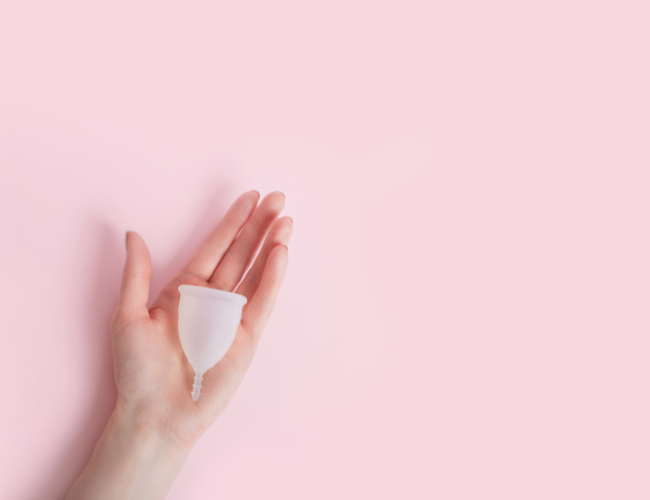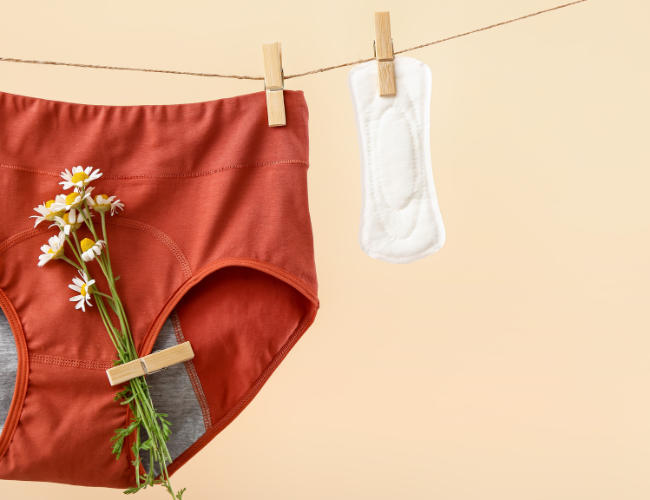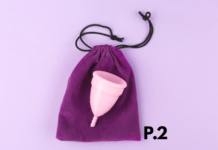Menstruation is a natural part of life for many individuals, and finding sustainable alternatives to traditional disposable products has become increasingly important.
The impact of disposable menstrual products on the environment is significant, leading many to seek reusable options that are not only eco-friendly but also cost-effective.
In this article, we’ll explore various reusable period products, providing insights, recommendations, and a comprehensive guide to help you make informed decisions about your menstrual care routine.
1. Embracing Menstrual Cups

Understanding Menstrual Cups
When it comes to reusable period products, menstrual cups have gained immense popularity. These bell-shaped silicone cups are inserted into the vagina to collect menstrual flow.
Unlike tampons, which absorb the flow, menstrual cups simply gather it, making them a healthier and more sustainable option. Menstrual cups come in various sizes, shapes, and materials, providing users with a range of choices to suit their specific needs.
It’s advisable to select a cup that aligns with your cervix height and menstrual flow volume for optimal comfort and performance.
Pros and Cons of Menstrual Cups
| Pros | Cons |
| Environmentally friendly | Initial learning curve |
| Cost-effective in the long run | Emptying/cleaning in public restrooms |
| Reduced risk of Toxic Shock Syndrome | Possible discomfort during insertion |
While there is a slight learning curve associated with using menstrual cups, the benefits they offer in terms of sustainability, cost, and health outweigh the initial adjustments.
With proper insertion and maintenance, many users find menstrual cups to be a game-changer in their menstrual care routines.
2. Exploring Menstrual Discs
What Are Menstrual Discs?
Similar to menstrual cups, menstrual discs are another reusable internal menstrual product. They are designed to collect, rather than absorb, menstrual flow.
Shaped like a disc, these flexible devices rest at the base of the cervix, allowing for mess-free and comfortable wear. Unlike traditional menstrual products, discs can typically hold more fluid, making them suitable for individuals with heavier flows.
Pros and Cons of Menstrual Discs
| Pros | Cons |
| High capacity for menstrual flow | Can be messy during removal |
| Comfortable for physical activity | Potential difficulty with placement |
| Less frequent changes required | Not suitable for everyone’s anatomy |
Menstrual discs provide a reliable alternative for those seeking a high-capacity, leak-resistant option. While they may not be suitable for everyone, their comfortable design and extended wear time make them a compelling choice for many individuals.
3. Opting for Period Underwear

Understanding Period Underwear
Period underwear offers a convenient and eco-friendly solution for managing menstrual flow. These specially designed undergarments feature built-in absorbent layers, eliminating the need for additional pads or tampons.
They are available in various styles, from bikini to high-waisted, catering to different preferences and flow levels. The absorbent layers in period underwear are designed to wick away moisture, prevent leaks, and provide a comfortable, dry feeling throughout the day.
Pros and Cons of Period Underwear
| Pros | Cons |
| Reusable and washable | Initial investment in multiple pairs |
| Leak-proof and odor-resistant | Bulkier than regular underwear |
| Eliminates the need for additional products | May not be suitable for heavy flow days |
While period underwear may require a slightly higher initial investment, the convenience, comfort, and waste reduction they offer make them an attractive option for those aiming to reduce their environmental impact while managing menstruation.
4. Considering Washable Pads
What Are Washable Pads?
Washable cloth pads function similarly to disposable pads but are made from reusable, washable materials such as cotton or bamboo fibers.
These pads come in various sizes, absorbency levels, and designs, catering to individual preferences and flow intensities. Some feature snaps to secure them in place, while others offer added wings for extra coverage and security.
Pros and Cons of Washable Pads
| Pros | Cons |
| Environmentally friendly | Regular washing required |
| Economical over time | Bulkier than some disposable options |
| Customizable in terms of absorbency and design | May not be suitable for heavy flows |
Washable pads offer a customizable, eco-friendly approach to managing menstrual flow. While they require regular laundering, the cost savings and reduced environmental impact make them a compelling option for many individuals.
5. Sustainable Menstrual Care Beyond Products

Menstrual Product Care Tips
- Proper Cleaning:Proper cleaning and maintenance of reusable menstrual products are essential to ensure their longevity and effectiveness. Each product comes with specific care instructions, typically involving washing with mild soap and water or a designated cleanser. It’s important to follow these guidelines to prevent deterioration and maintain optimal hygiene.
- Storage: Storing reusable menstrual products in a breathable container or pouch helps protect them from dust and debris. Avoid storing them in airtight containers to prevent the growth of bacteria and mold.
- Inspection: Regularly inspect your reusable period products for signs of wear, tear, or damage. Replace them as needed to ensure continued effectiveness and comfort.
Menstrual Product Hygiene Etiquette
Maintaining proper hygiene during menstruation is crucial for overall health and well-being. When using reusable menstrual products, it’s essential to practice good hygiene habits, including regular handwashing before and after handling the products.
It’s also advisable to carry a small pouch containing clean, damp wipes when using external reusable options like pads or underwear, especially when access to private restrooms or washing facilities may be limited.
Conclusion
Embracing reusable menstrual products is a significant step towards sustainable and eco-friendly menstrual care. Whether opting for menstrual cups, discs, period underwear, or washable pads, individuals have an array of choices to suit their preferences, flow intensity, and lifestyle.
Making the switch to reusable period products not only reduces environmental impact but also offers long-term cost savings and benefits to personal health and comfort.
By understanding the various options available and their respective pros and cons, you can make informed decisions that align with your values and contribute to a more sustainable future.
Additionally, adopting proper care and hygiene practices ensures the longevity and effectiveness of reusable menstrual products, making them reliable and practical alternatives to traditional disposable options.
In conclusion, the shift towards reusable menstrual products empowers individuals to manage their periods in a way that is healthy, environmentally conscious, and economically sound.



















